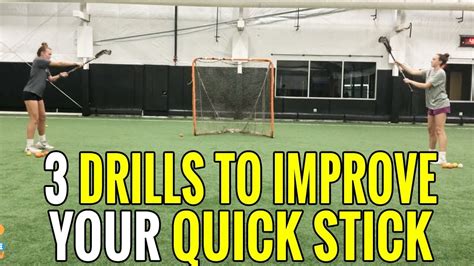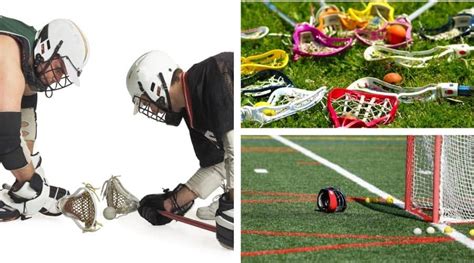Discover essential lacrosse training drills, off-season skill development, strength conditioning, and progress tracking tips for enhanced performance and success in the game.Lacrosse is a dynamic sport that requires both finesse and strength, making year-round training essential for athletes looking to elevate their skills to the next level. Whether you’re a seasoned player or just starting, understanding the foundations of effective lacrosse training can significantly impact your performance on the field. In this article, we’ll delve into essential drills and off-season programs designed to develop key skills, explore the importance of strength and conditioning, and highlight the benefits of consistent practice. We’ll also provide insights on tracking your progress to ensure you’re continually improving. Join us as we unlock the secrets to maximizing your lacrosse potential, enabling you to shine come game day.
Essential Drills For Effective Lacrosse Training
Drills are an indispensable component of Lacrosse Training: as they help players build crucial skills while fostering teamwork and game awareness. Below are some essential drills that can significantly enhance your lacrosse abilities.
| Drill Name | Description | Benefits |
|---|---|---|
| Wall Ball | Throw the ball against a wall and catch it when it rebounds. Vary the distance and angles. | Improves passing, catching, and hand-eye coordination. |
| Ground Ball Pick-Up | Practice picking up ground balls from different angles and speeds. | Enhances ground ball skills and quick reflexes. |
| Dodging Drills | Practice various dodging techniques against a defender. | Helps develop agility, balance, and offensive skills. |
| Fast Break Drill | Simulate fast break scenarios where players transition from defense to offense. | Improves teamwork, transition play, and quick decision-making. |
| Goalie Reaction Drill | Goalies practice stopping shots from different angles and distances. | Enhances reflexes, positioning, and shot-stopping techniques. |
Incorporating these drills into your Lacrosse Training: regimen will not only improve individual skills but also enhance your overall performance as a player. Regular participation in these drills can lead to significant improvement in game situations, making you a valuable asset to your team.
Developing Key Skills Through Off-Season Programs
Off-season programs are critical for athletes looking to enhance their performance in sports like lacrosse. By incorporating focused Lacrosse Training: sessions during the off-season, players have the opportunity to work on their individual skills and overall game strategy. This time away from regular competition allows athletes to focus intensively on areas that need improvement.
Key skills that can be developed during the off-season include:
- Stick Skills: Working on passing, catching, and shooting mechanics can significantly improve a player’s effectiveness during games.
- Footwork: Agility drills that focus on quick changes of direction and speed can help players navigate the field more effectively.
- Defensive Techniques: Understanding positioning, checking, and foot speed can make a big difference in a player’s defensive game.
- Game Awareness: Reviewing game footage and strategies during this period can sharpen a player’s understanding of tactics and decision-making on the field.
Moreover, off-season programs provide an excellent platform for athletes to improve their physical conditioning. Players can work on strength training, endurance, and flexibility, which are crucial for reducing injuries and enhancing overall performance.
Collaborating with coaches or trainers for personalized Lacrosse Training: programs can further enhance the effectiveness of off-season practice. By setting specific goals and focusing on skill development during this period, players can enter the next season with a competitive edge.
Incorporating Strength and Conditioning In Lacrosse Training
Strength and conditioning are crucial components of Lacrosse Training: and most successful players integrate these elements into their practice routines. A tailored strength and conditioning program not only enhances athletic performance but also helps in preventing injuries. Here are some key aspects to consider when incorporating strength and conditioning into your lacrosse training regimen:
1. Functional Strength Training
Focus on compound exercises that mimic the movements used in lacrosse. Exercises such as squats, deadlifts, and bench presses can build overall strength, while Olympic lifts like the clean and jerk improve explosive power essential for game situations.
2. Plyometrics
Incorporating plyometric exercises, such as box jumps, burpees, and medicine ball throws, can improve your speed and agility on the field. These explosive movements will help you to change directions quickly and accelerate, which are vital skills for a lacrosse player.
3. Core Stability
A strong core enhances balance and stability, critical for performing at your best in lacrosse. Include exercises like planks, Russian twists, and stability ball workouts in your training to develop a robust core.
4. Conditioning and Endurance
On-field success requires endurance. Implement interval training to improve your aerobic capacity. This could involve running drills where you alternate between high-intensity sprints and lower-intensity jogging to mirror the demands of a lacrosse game.
5. Flexibility and Mobility Work
Incorporate stretching and mobility drills into your routine to maintain flexibility, which is vital in preventing injuries. Yoga and dynamic stretching sessions can be beneficial for enhancing body awareness and range of motion.
6. Recovery and Nutrition
Strength and conditioning don’t just take place on the field or in the gym. Prioritize rest and recovery to allow your body to heal and grow stronger. Proper nutrition also plays a crucial role; fuel your training with a balanced diet rich in protein, healthy fats, and carbohydrates.
By effectively integrating these elements of strength and conditioning into your Lacrosse Training:, you will not only boost your performance but also ensure that you are in optimal shape for the season ahead. Remember that consistency is key; dedication to a well-rounded training program throughout the year will yield significant improvements in your overall game.
The Impact Of Consistent Practice On Lacrosse Performance
Consistent practice is a cornerstone of Lacrosse Training: and is vital for developing and enhancing performance on the field. It serves as the foundation for skill improvement and overall athletic growth. Here are several key impacts consistent practice has on lacrosse performance:
1. Skill Refinement
Through regular practice, players can refine their technical skills, such as shooting, passing, and ground ball pickups. As players repeat these movements, muscle memory develops, which results in a more instinctive execution of each skill during games.
2. Tactical Understanding
Consistency in practice allows athletes to better grasp the tactical aspects of the game, including formations and plays. Regularly running through game scenarios helps players learn decision-making processes and become more strategic.
3. Enhanced Fitness Levels
Frequent practice sessions contribute to improved endurance and fitness. This is particularly important in a sport like lacrosse, which requires sustained energy and agility throughout a game. With proper conditioning incorporated into Lacrosse Training:, athletes can withstand the physical demands of the sport more effectively.
4. Building Team Chemistry
Consistent practices foster relationships among teammates, enhancing communication and collaboration on the field. This chemistry is crucial for the execution of team strategies and can significantly impact game outcomes.
5. Boosting Confidence
As players accumulate experience and witness their own progress through routine practice, their confidence surges. This self-assuredness not only improves individual performance but also creates a more positive team atmosphere.
The impact of consistent practice on lacrosse performance cannot be overstated. It enhances skill sets, strategic understanding, fitness, team dynamics, and player confidence, all of which are crucial for success in the sport. By integrating consistent practice into your Lacrosse Training: regimen, you’re setting yourself up for growth and improved performance throughout the season.
Tracking Progress: Measuring Lacrosse Training Success
Tracking progress is a crucial component of effective Lacrosse Training: it helps players and coaches identify strengths, areas for improvement, and overall development over time. By implementing various measurement techniques, athletes can assess their performance and adjust their training regimes accordingly.
Here are a few methods to measure success in Lacrosse Training:
- Statistical Analysis: Keeping detailed statistics on individual and team performance during games and practices can provide valuable insights. Focus on metrics such as goals scored, assists, turnovers, ground balls, and shot percentage.
- Video Analysis: Recording practices and games allows players to visually analyze their skills and decision-making processes. Reviewing footage can help identify patterns and areas for improvement that may not be evident during play.
- Skill Assessments: Regularly schedule skill assessments that test fundamental abilities such as catching, throwing, dodging, and defensive maneuvers. This can be done through drills that track time, accuracy, and success rates.
- Fitness Testing: Incorporate fitness assessments that measure speed, agility, endurance, and strength. Keeping consistent data on performance in these areas can help tailor Lacrosse Training: to enhance conditioning.
Moreover, it can be helpful to maintain a training log. This log should document daily training sessions, including workouts, drills performed, and any important notes about the player’s physical and mental state. Such a log not only provides a reference for progress but serves as a motivational tool.
Here’s a simple table template to track progress over time:
| Date | Drill/Activity | Time Spent | Performance Metrics | Notes |
|---|---|---|---|---|
| MM/DD/YYYY | Drill Name | XX mins | Stat 1, Stat 2 | Any observations |
Regularly revisiting and analyzing this data will help players see their growth and maintain motivation throughout the Lacrosse Training: process, guiding them toward achieving their long-term goals.
Frequently Asked Questions
What are the key skills needed for lacrosse?
The key skills needed for lacrosse include passing, catching, shooting, dodging, and defensive maneuvers.
How can I practice my passing technique?
You can practice your passing technique by finding a wall to throw against, using different types of passes, or practicing with a partner.
What are some drills to improve my shooting?
Drills like target shooting, practicing different angles, and shooting on the run can significantly enhance your shooting skills.
How important is conditioning for lacrosse players?
Conditioning is crucial for lacrosse players, as it improves endurance, speed, and overall performance on the field.
What equipment do I need for year-round training?
Essential equipment includes a lacrosse stick, balls, cleats, gloves, and protective gear. Additional items like a shooting target and training cones can be beneficial.
What role does mental training play in enhancing lacrosse skills?
Mental training is vital as it helps players focus, manage stress, and develop strategies, contributing to overall performance improvement.
How can I stay motivated to train year-round?
Setting specific goals, tracking progress, and training with friends or joining a lacrosse club can help maintain motivation to train year-round.









